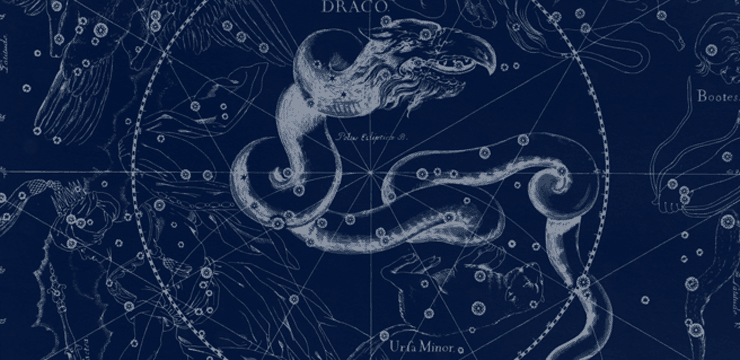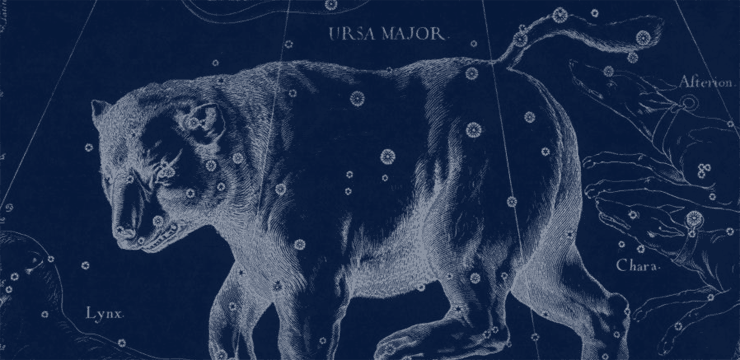
September Constellations & Folklore
September 2011 :
At this time of year, even though the season of summer ends this month and fall begins, the sky takes a little longer to shift to its next season. The Summer Triangle is still in a beautiful observing position, not really giving the fall constellations a chance to come to full view. So, while we’re waiting, it might be good to turn back to the north and see what is happening there.
The most visible shape, the Big Dipper, is slowly moving toward the northern horizon, which places the legs of the Big Bear, the constellation containing the Dipper, below ground. For the American Indians, this was a rather useful placement, because it explained a change that occurred on Earth. In their myth, the three stars of the Big Dipper’s handle were braves who were hunting the bear. When he was in this position, the Indian with the bow shot the bear, wounding him seriously, but not mortally; however, he lost a lot of blood, which, because of where he is, could only flow downward onto the Earth, coating the leaves on the trees. A perfect answer to why the leaves change color at this time of year.
Just above the Big Dipper lies the tail of one of the easier constellations to picture: Draco, the Dragon. Often thought to be one of Hercules’s labors, wherein he had to slay the dragon to retrieve golden apples of Hesperides which it was guarding, Draco also is the guardian of the golden fleece, which Jason must kill in order to procure that. In early Christian cultures, it represented the serpent that tempted Adam and Eve, causing them to be ejected from the Garden of Eden. Although its stars aren’t very bright, its shape, a backwards “S” beginning above the Big Dipper and following the curve of the Little Dipper, then backtracking on itself, ending at a crooked rectangle often called the asterism the Lozenge, isn’t very difficult to find.
Following the end of the pan of the Big Dipper to Cassiopeia, you might notice that the “M” or “W” shape you normally see is now sideways. Actually, this represents the chair that Cassiopeia is sitting on. At this time of year, the chair is upside-down, the sign that the Queen, who was placed in the sky for her vanity, must sit with her head downward in humility. If you now look at her top two stars, draw a line through them and follow that line to the left, or west, you’ll find yourself in the middle of a very dim square. Below the square is another dim star that, when you connect them all together, will look a lot like a clown hat or a house. That’s Cassiopeia’s husband, Cepheus, placed there to keep her company as she moves around the north pole in the sky.
The last of our traditional northern constellations, in the group deemed circumpolar which, for us, means they are always present in our sky, is Camelopardalis. This is one of the rather newer star patterns, apparently being unknown before the 17th century. Its name is a shortened form for camel and leopard, although it is usually called the Giraffe, but to spot an actual shape here, you need a good imagination.
Although not circumpolar, Lacerta the Lizard is often included with the northern set of constellations because his head lies very close to both Cassiopeia and her husband Cepheus. In early times it was thought to represent the rock that their daughter Andromeda was chained to in waiting for her fate. Now it’s usually thought to be just a tiny little lizard that also requires you to use your imagination to find.
When to Observe
Constellations
Related Topics




